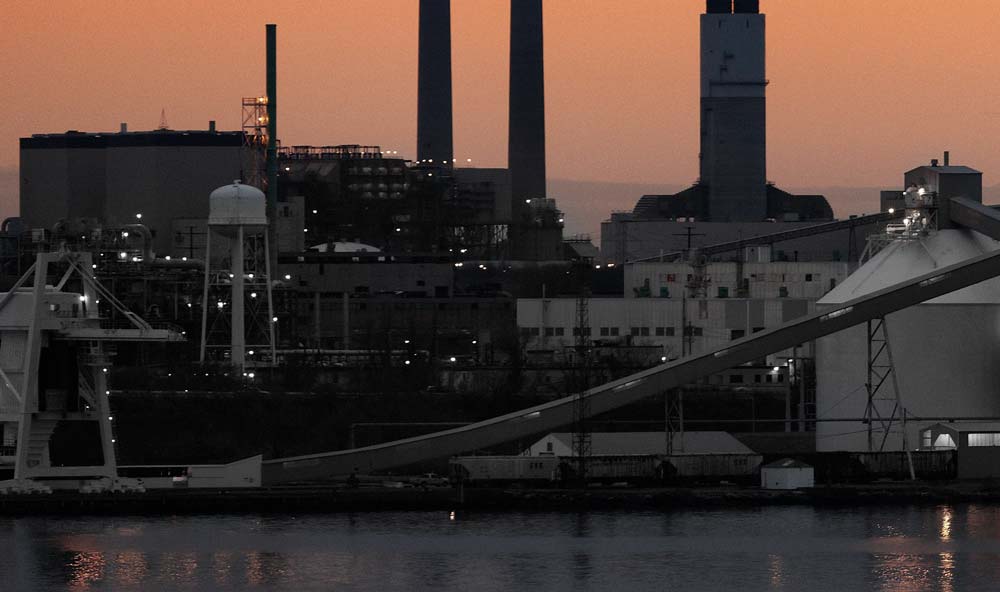
The decline of manufacturing jobs hurt everyone. But Black communities suffered the most.
Editor's note: The Alliance for American Manufacturing unveiled a new report today, Unmade in America: Industrial Flight and the Decline of Black Communities. Written by research fellow Gerald Taylor, the report makes the case that while all manufacturing communities suffered because of major job losses starting in the 1970s, Black workers were disproportionately hurt. In the essay below — the first in a series of three blog posts — Taylor outlines some of the reasons why Black workers were at such a disadvantage. In later entries, he'll outline ways to help these communities.
Making things and making them well is arguably the most reliable way for a country to secure meaningful and sustainable economic growth. Perhaps the most striking example of this fact occurred in the United States during and after its involvement in the Second World War. The demand for manufactured goods created millions of new jobs, producing an economic boom that, along with the successes of the war, helped to cement the United States as a global superpower.
In short, the economic future for America’s middle class and workers seemed bright. But as early as the 1960s, this hopeful reality was challenged by rapidly changing industrial and economic landscapes. Unfair trade practices such as import dumping and currency manipulation led to damaging trade imbalances and widespread job loss. Automation began to occupy an increasingly significant role in industrial production processes. The jobs that weren’t done away with in this way were generally shipped either to the South, where ‘right to work’ laws drove down both union membership and workers’ wages, or overseas, where cheap labor was abundant and environmental and workplace regulations were weak at best. Industrial boomtowns like Youngstown, Baltimore, and Flint were devastated by the resulting wave of plant closings.
It is unsurprising that these changes have been disastrous for American manufacturing employment, which has lost over 7 million jobs since its peak in 1978, 5 million of which have been lost just since the year 2000. But one element that is often left out of these discussions is the fact that black workers, families, and communities have had to bear an unduly large share of the burden imposed by deindustrialization.
One reason for this is black workers have for decades been disproportionately represented among the unemployed workforce, are more likely to become unemployed, and are typically unemployed for longer on average than their white counterparts. This fact, coupled with the longstanding wealth gap between black and white Americans, means that workers of color are not only more likely to be laid off, but are also more likely to be plunged into poverty when they are, to stay in that state of distress for longer, and to find it more difficult to recover in its aftermath.
These difficulties were made worse by unjust housing and lending practices like redlining and blockbusting. Black families that weren’t necessarily held back by insufficient personal wealth were often met with these race-based barriers to escaping their dire circumstances. This effectively ensured that deindustrialized communities not only became poorer as time progressed, but also that they became increasingly segregated.
The major effect of this segregation and poverty was that the places hit hardest by deindustrialization lost money rapidly. Industrial centers tended to be small and not very diverse economically. As such, when their manufacturing bases began to erode—along with the associated income and property tax revenue—those cities and towns quickly found themselves ill equipped to provide crucial public resources like clean water, police and fire protection, sanitation, and health care.
Black workers, families, and communities have had to bear an unduly large share of the burden imposed by deindustrialization. One reason for this is black workers have for decades been disproportionately represented among the unemployed workforce, are more likely to become unemployed, and are typically unemployed for longer on average than their white counterparts. This fact, coupled with the longstanding wealth gap between black and white Americans, means that workers of color are not only more likely to be laid off, but are also more likely to be plunged into poverty when they are, to stay in that state of distress for longer, and to find it more difficult to recover in its aftermath.
Conditions like these meant that life in deindustrialized communities quickly came to resemble a perpetual state of emergency, lacking any sense of security or coherence. Urban decay produced conditions in these areas that most would regard as unlivable; mounting economic distress made health crises and domestic tension more the norm than the exception; and crime inevitably increased in response to all of these challenges. Indeed, at the height of deindustrialization, these places seemed more like war-torn battlefields than residential neighborhoods.
These areas have struggled mightily to recover from their industrial losses. But for several reasons, these attempts tend to fall short of expectations. Apathy, cynicism, and diminished civic engagement—spurred on by failures of municipal responsibility and leadership and prolonged suffering—often inhibits civic momentum before it has a chance to build. Further, the increasingly negative reputation surrounding deindustrialized areas can result in a lack of interest and investment from outside sources. These two factors often prove to be decisive obstacles to obtaining assistance at the very time that such assistance is most urgently needed, perpetuating the vicious cycle of distress.
The situation for deindustrialized communities is dismal, especially where black communities are concerned. The next post in this series will discuss what form meaningful and effective solutions for these communities should take.
Read Unmade in America: Industrial Flight and the Decline of Black Communities.
